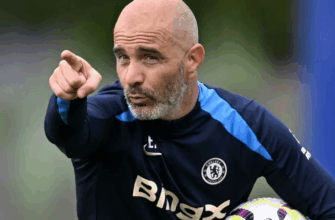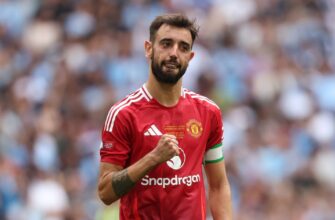As the football world braces for another exhilarating Premier League season, the familiar hum of anticipation among Fantasy Premier League (FPL) enthusiasts grows louder. Millions of managers, armed with a theoretical £100 million and a boundless reservoir of optimism, embark on the perennial quest to assemble the perfect 15-man squad. This year, however, a new voice has joined the chorus of pundits and seasoned strategists: Artificial Intelligence.
Grok, the advanced AI tool from X, has ventured where few algorithms dared to tread, offering its definitive predictions for the 2025/26 FPL season. It has meticulously analyzed reams of data to pinpoint the most impactful player from each of the 20 Premier League clubs, complete with their FPL cost and a projected points tally. Is this the dawn of a new era, where silicon chips dictate our transfer decisions, or merely an intriguing experiment in the ever-unpredictable world of fantasy football?
- Grok`s Grand Designs: Navigating the Premier League Through AI`s Gaze
- The Unquestionable Dominators: AI Confirms The Elite`s Reign
- The Backbone of Squads: Rising Stars and Consistent Performers
- The AI`s Wildcards: Unearthing the Unconventional Gems
- The Human vs. The Machine: Navigating FPL`s Complexities
- Integrating AI into Your FPL Arsenal
Grok`s Grand Designs: Navigating the Premier League Through AI`s Gaze
The AI`s forecast provides a fascinating counterpoint to human intuition, blending statistical certainty with, perhaps, a touch of calculated audacity. While some of its choices resonate with common FPL wisdom, others suggest a computational perspective that sees beyond the obvious, potentially unearthing overlooked value or signaling shifts in player performance before they become universally apparent.
The Unquestionable Dominators: AI Confirms The Elite`s Reign
Predictably, the AI`s top picks for overall FPL dominance align with the established giants of the game. Mohamed Salah of Liverpool, an perennial FPL icon, is projected to command an astonishing 300-320 points. Such a forecast, while ambitious, reflects his consistent ability to deliver elite-tier returns year after year. Similarly, Manchester City`s goal-scoring phenomenon, Erling Haaland, is anticipated to amass between 240 and 260 points. These two behemoths, despite their premium price tags, are seemingly indispensable for any manager aiming for the summit, according to Grok.
- Liverpool: Mohamed Salah (£14.5m) – 300–320 points
- Manchester City: Erling Haaland (£14m) – 240–260 points
The Backbone of Squads: Rising Stars and Consistent Performers
Beyond the top echelons, Grok identifies key players expected to form the bedrock of many high-performing FPL teams. Bukayo Saka (Arsenal) and Cole Palmer (Chelsea), both dynamic attacking midfielders, are touted for remarkable seasons, with predicted point ranges of 220-250 and 220-240 respectively. Their creative output and goal-scoring prowess make them compelling choices. In the striker department, Alexander Isak (Newcastle) and Ollie Watkins (Aston Villa) are also highlighted for their significant contributions, expected to deliver strong FPL returns without quite breaching the very highest price brackets.
- Arsenal: Bukayo Saka (£10m) – 230–250 points
- Chelsea: Cole Palmer (£10.5m) – 220–240 points
- Newcastle United: Alexander Isak (£10.5m) – 200–220 points
- Aston Villa: Ollie Watkins (£9m) – 180–200 points
The AI`s Wildcards: Unearthing the Unconventional Gems
Perhaps the most intriguing aspect of Grok`s analysis lies in its choices for clubs often considered to be outside the FPL`s traditional “big hitters.” When the algorithm suggests names like Antoine Semenyo (£7m) for Bournemouth, or Kevin Schade (£7m) for Brentford, it signals a deeper statistical dive, perhaps identifying players on the cusp of a breakthrough or those who consistently generate underlying attacking data. Could these be the differential picks that define a season for daring managers?
Similarly, the inclusion of Hannibal Mejbri (£5m) for Burnley, Antonee Robinson (£5m) for Fulham, or Jorgen Strand Larsen (£6.5m) for Wolves hints at value propositions that human managers might overlook due to historical performance or lack of media attention. Whether these players will be budget enablers or algorithmic anomalies remains to be seen, but Grok certainly isn`t afraid to back an underdog.
Below is the complete list of Grok AI`s predicted top FPL players for each Premier League club for the 2025/26 season:
| Club | Player | FPL Cost | Predicted Points |
|---|---|---|---|
| Arsenal | Bukayo Saka | £10m | 230–250 |
| Aston Villa | Ollie Watkins | £9m | 180–200 |
| Bournemouth | Antoine Semenyo | £7m | 160–180 |
| Brentford | Kevin Schade | £7m | 140–160 |
| Brighton | Kaoru Mitoma | £6.5m | 160–180 |
| Burnley | Hannibal Mejbri | £5m | 110–130 |
| Chelsea | Cole Palmer | £10.5m | 220–240 |
| Crystal Palace | Eberechi Eze | £7.5m | 170–190 |
| Everton | Jordan Pickford | £5.5m | 130–150 |
| Fulham | Antonee Robinson | £5m | 120–140 |
| Leeds | Joel Piroe | £5.5m | 110–130 |
| Liverpool | Mohamed Salah | £14.5m | 300–320 |
| Manchester City | Erling Haaland | £14m | 240–260 |
| Manchester United | Matheus Cunha | £7.5m | 170–190 |
| Newcastle United | Alexander Isak | £10.5m | 200–220 |
| Nottingham Forest | Chris Wood | £7.5m | 150–170 |
| Sunderland | Simon Adingra | £5.5m | 100–120 |
| Tottenham | Dominic Solanke | £7.5m | 160–180 |
| West Ham | Jarrod Bowen | £8m | 150–170 |
| Wolves | Jorgen Strand Larsen | £6.5m | 120–140 |
The Human vs. The Machine: Navigating FPL`s Complexities
The beauty of Fantasy Premier League, and indeed, football itself, lies in its inherent unpredictability. While an AI like Grok can process vast quantities of historical data and identify trends, it operates without the nuances of human understanding. Can an algorithm foresee a sudden dip in form, a crucial tactical shift by a new manager, the psychological impact of a derby loss, or the sheer bad luck of an unexpected injury?
These are the variables that human FPL managers grapple with weekly, making the game as much an art as it is a science. Grok`s predictions are a powerful analytical tool, a data-driven compass. Yet, they cannot fully account for the “human element”—the passion, the grit, the inexplicable moments of magic or despair that define a Premier League season. Trusting an AI implicitly would be to surrender the very essence of FPL`s charm: the triumph (or agony) of your own well-placed gamble.
Integrating AI into Your FPL Arsenal
Rather than a replacement for traditional FPL wisdom, AI predictions should be viewed as an invaluable addition to your strategic arsenal. Use Grok`s insights to validate your hunches, challenge your biases, and, crucially, to identify potential differential picks you might have otherwise overlooked. If the AI is consistently highlighting a player outside your initial considerations, it warrants a deeper investigation into their underlying statistics and potential role in their team. It’s a second opinion from the most logical, unbiased “manager” imaginable.
As Gameweek 1 approaches, the eternal FPL dilemma remains. Do you stack your team with proven heavy-hitters, or do you seek out those undervalued gems? This season, with artificial intelligence now throwing its hat into the ring, the debate is richer than ever. Will Grok`s algorithmic precision lead millions to fantasy glory, or will the sheer human unpredictability of the beautiful game ultimately prevail? The 2025/26 FPL season is set to be a fascinating test of man versus machine, where the only certainty is uncertainty.
Prepare your squads, crunch your numbers, and perhaps, take a peek at what Grok has to say. The digital era of Fantasy Premier League is here, promising a season where data and destiny collide on the virtual pitch.








